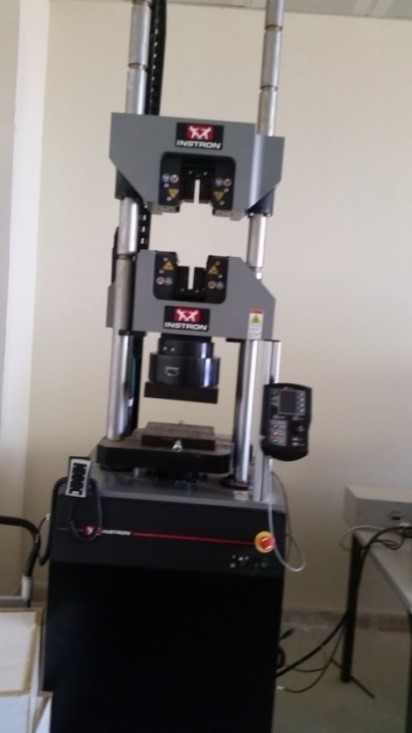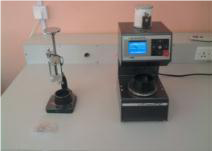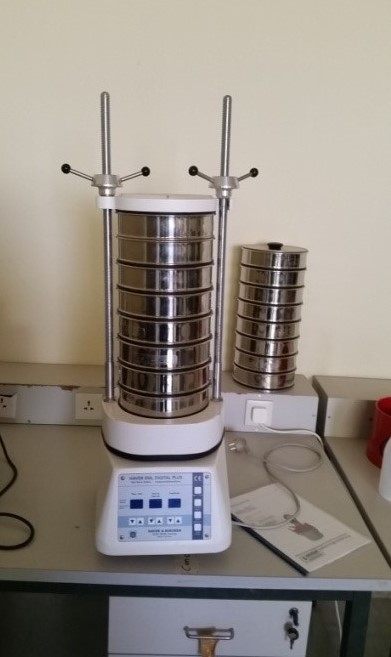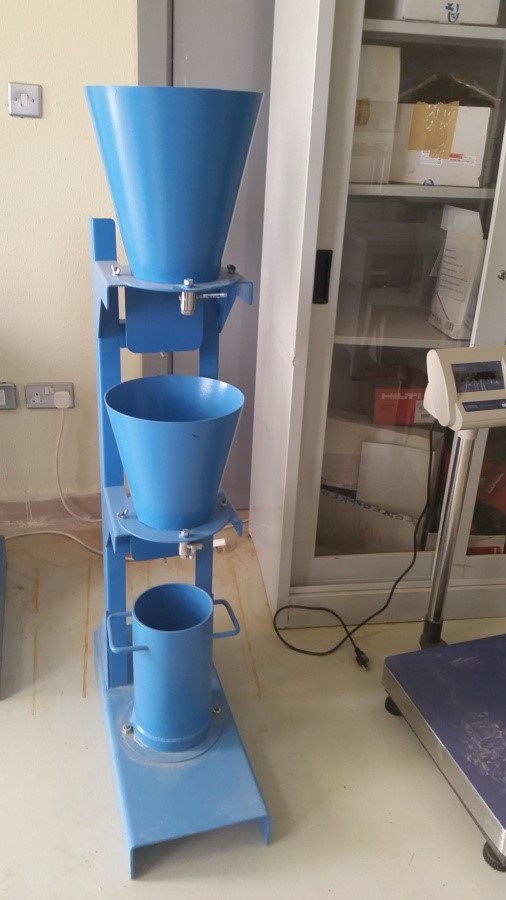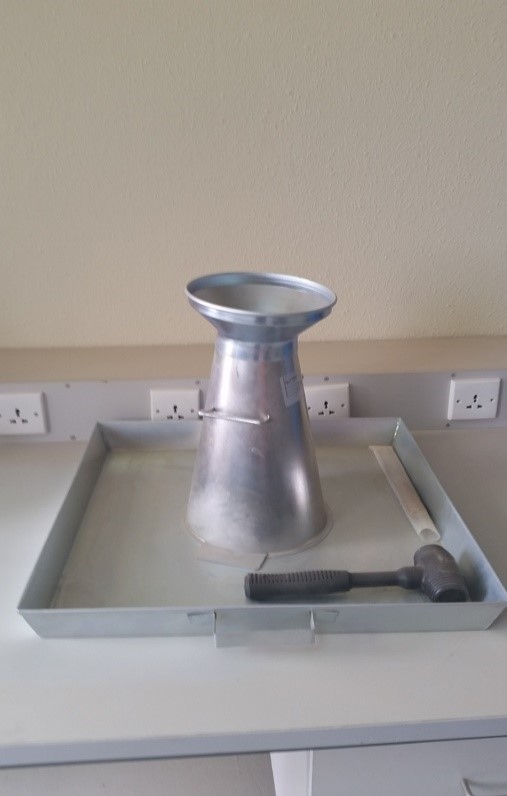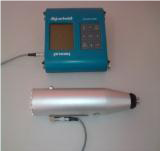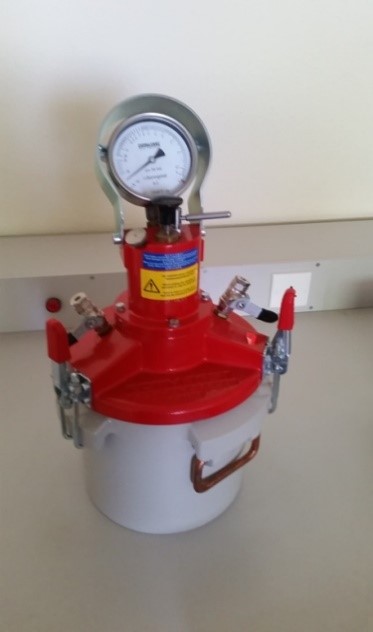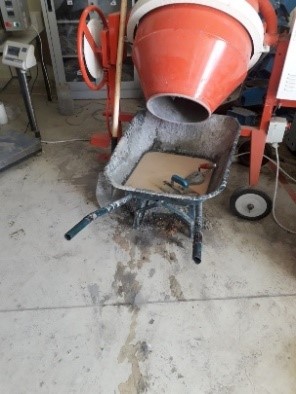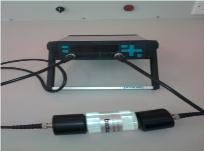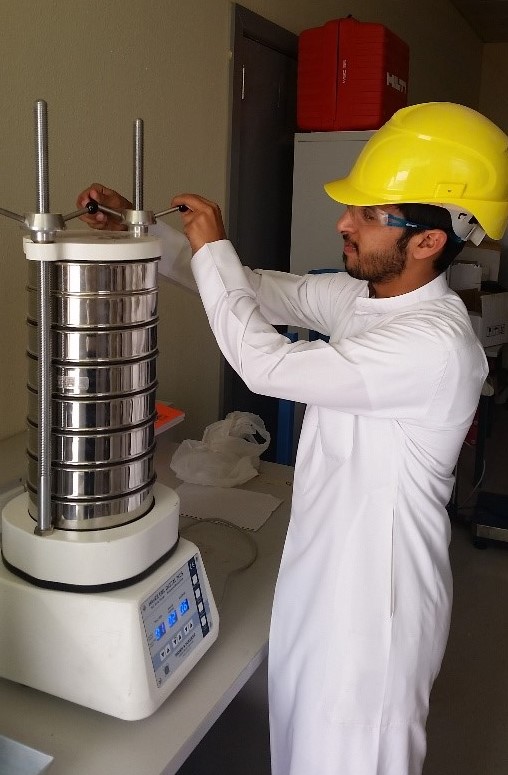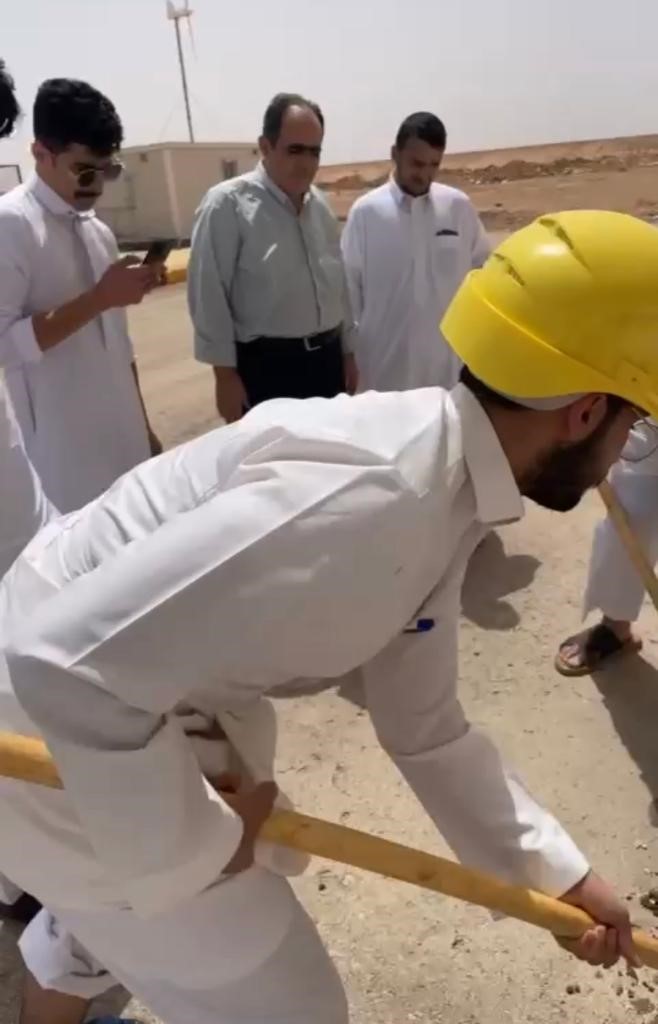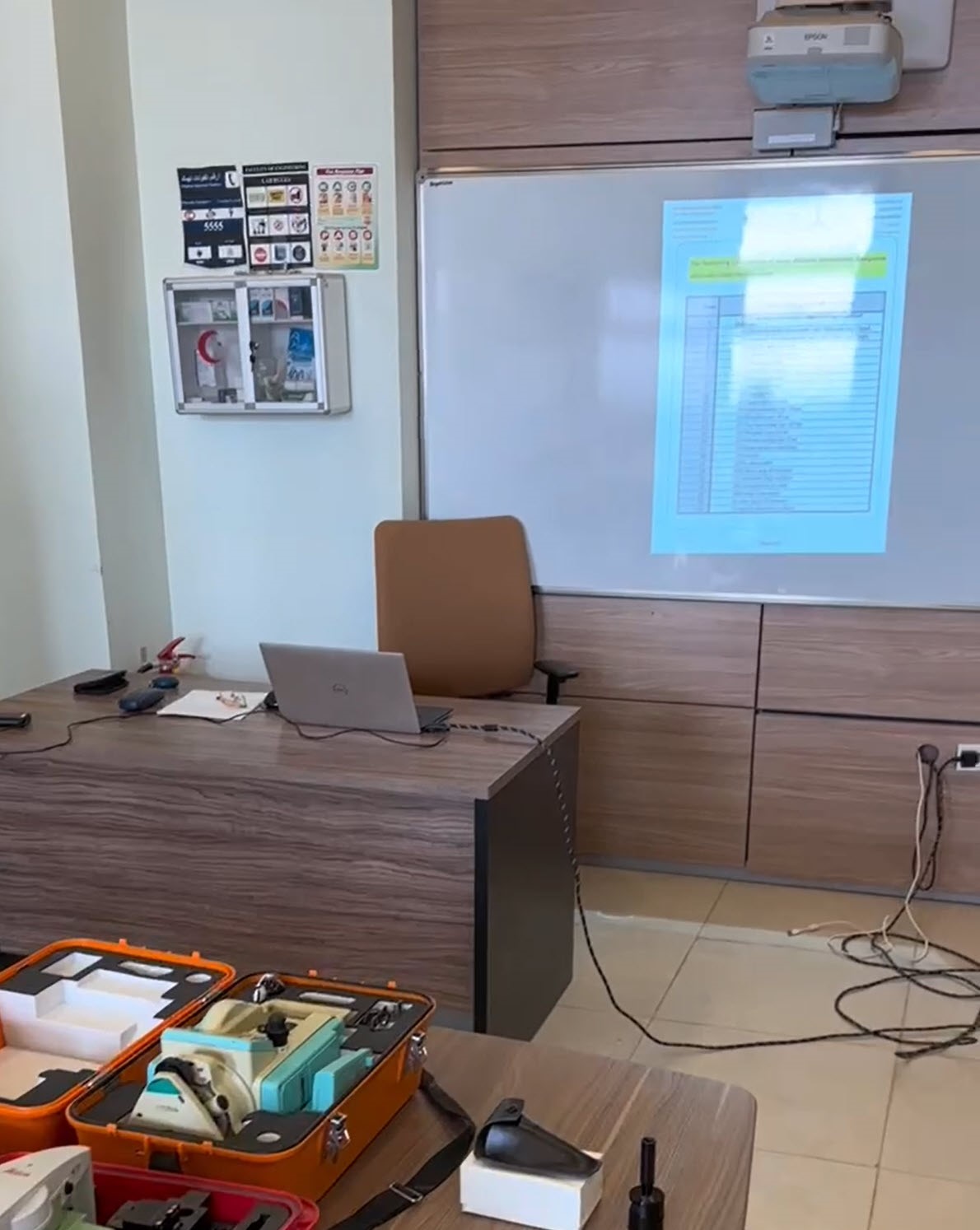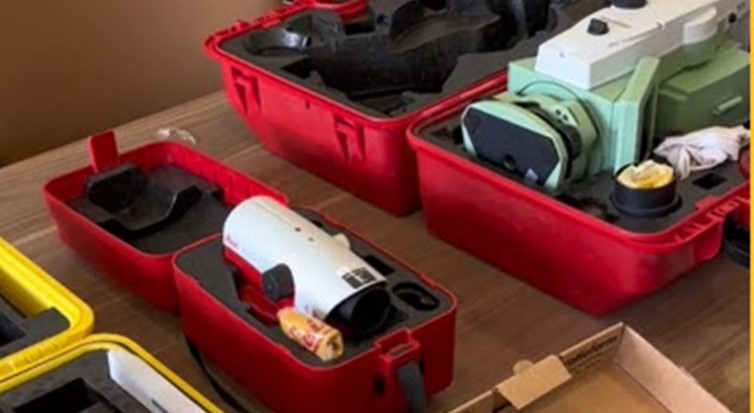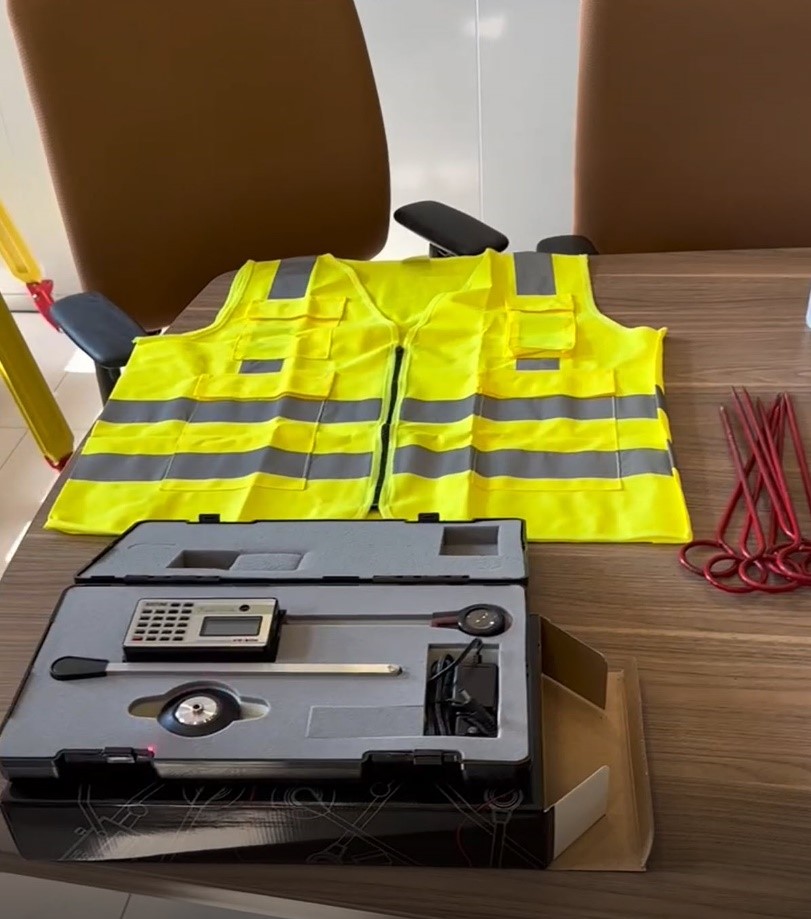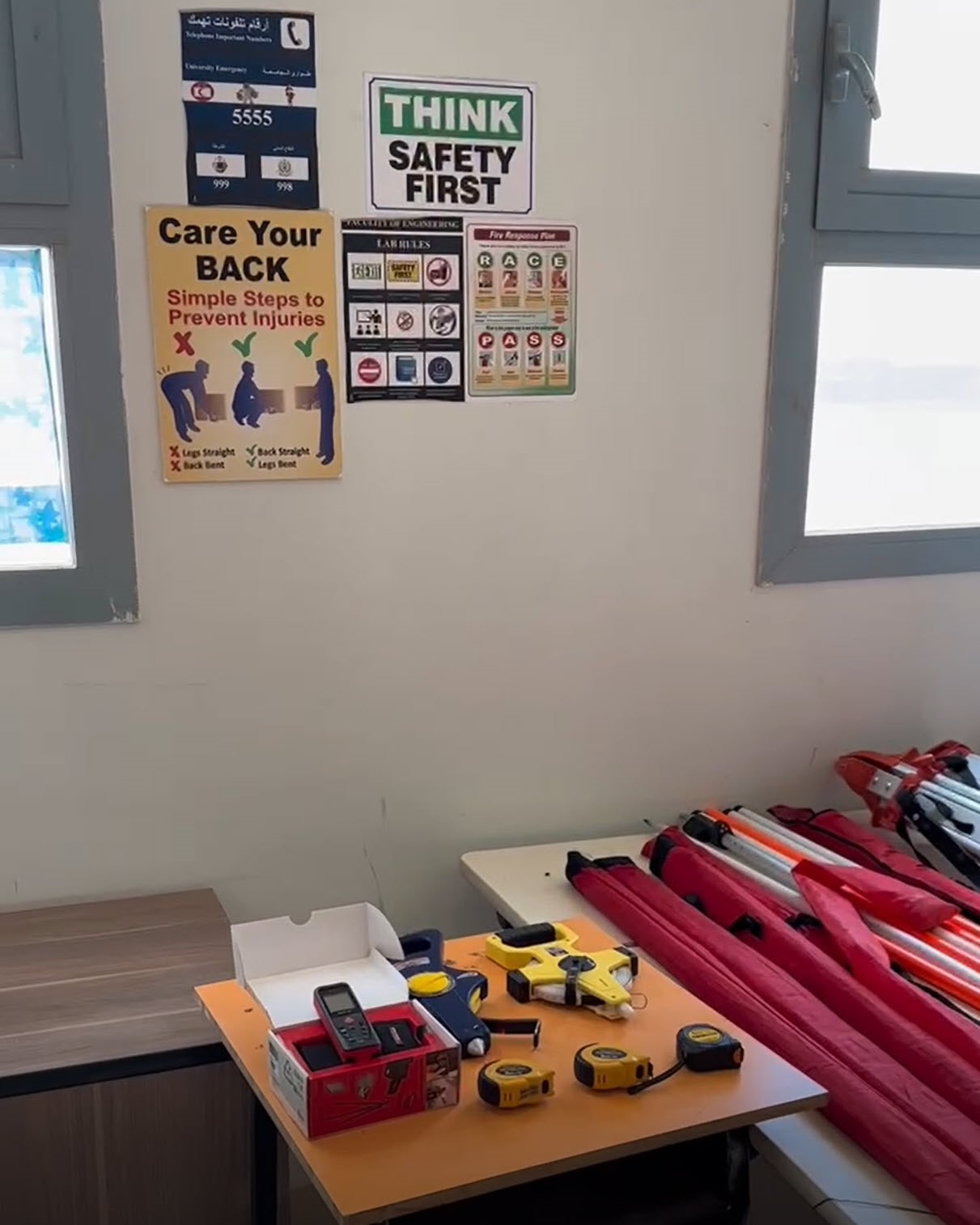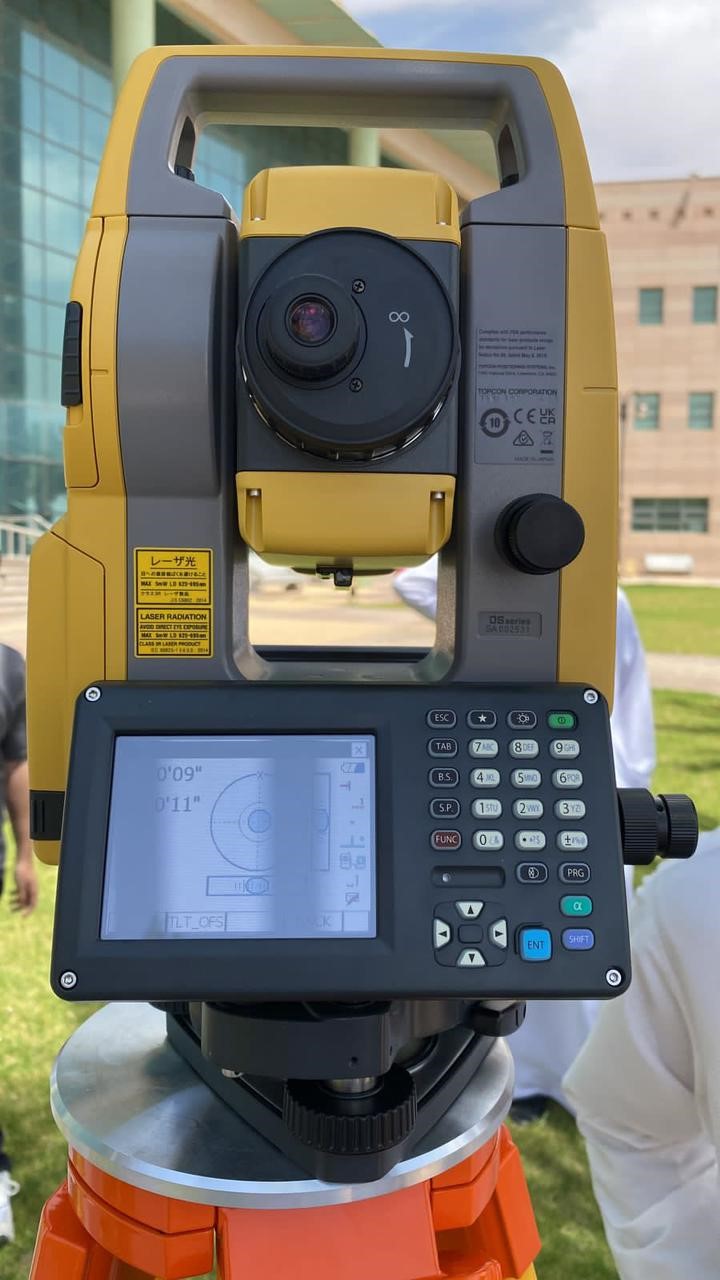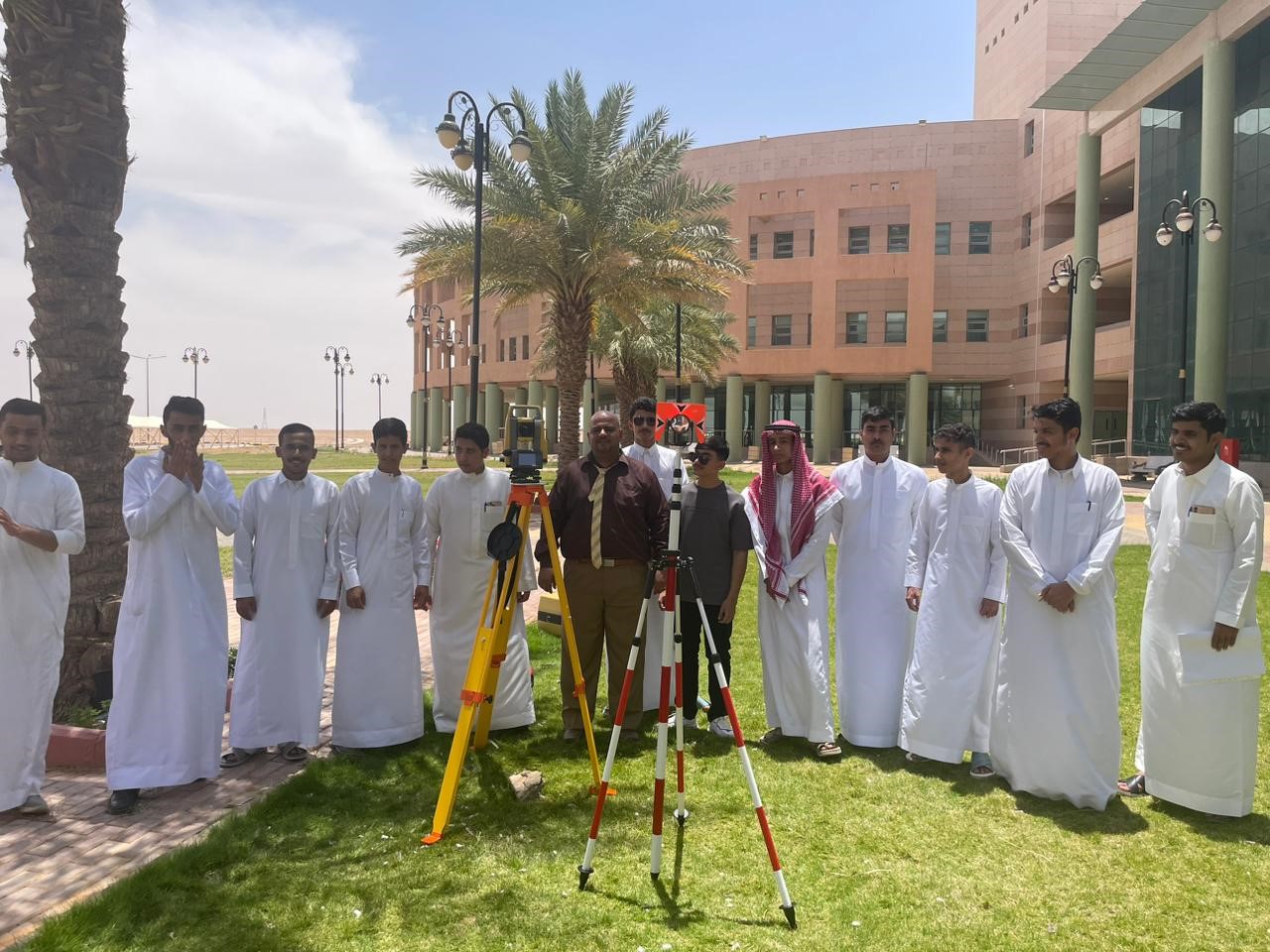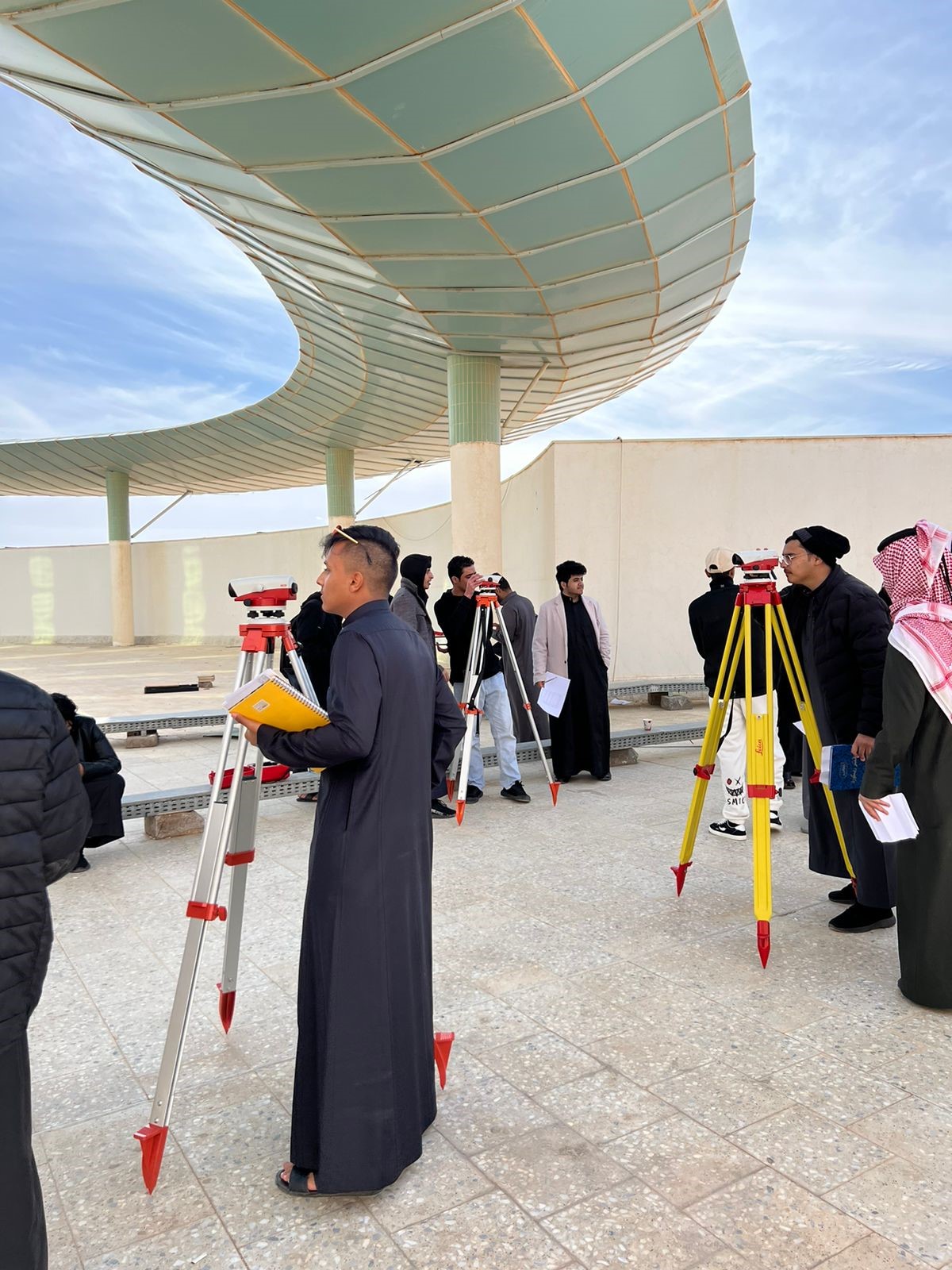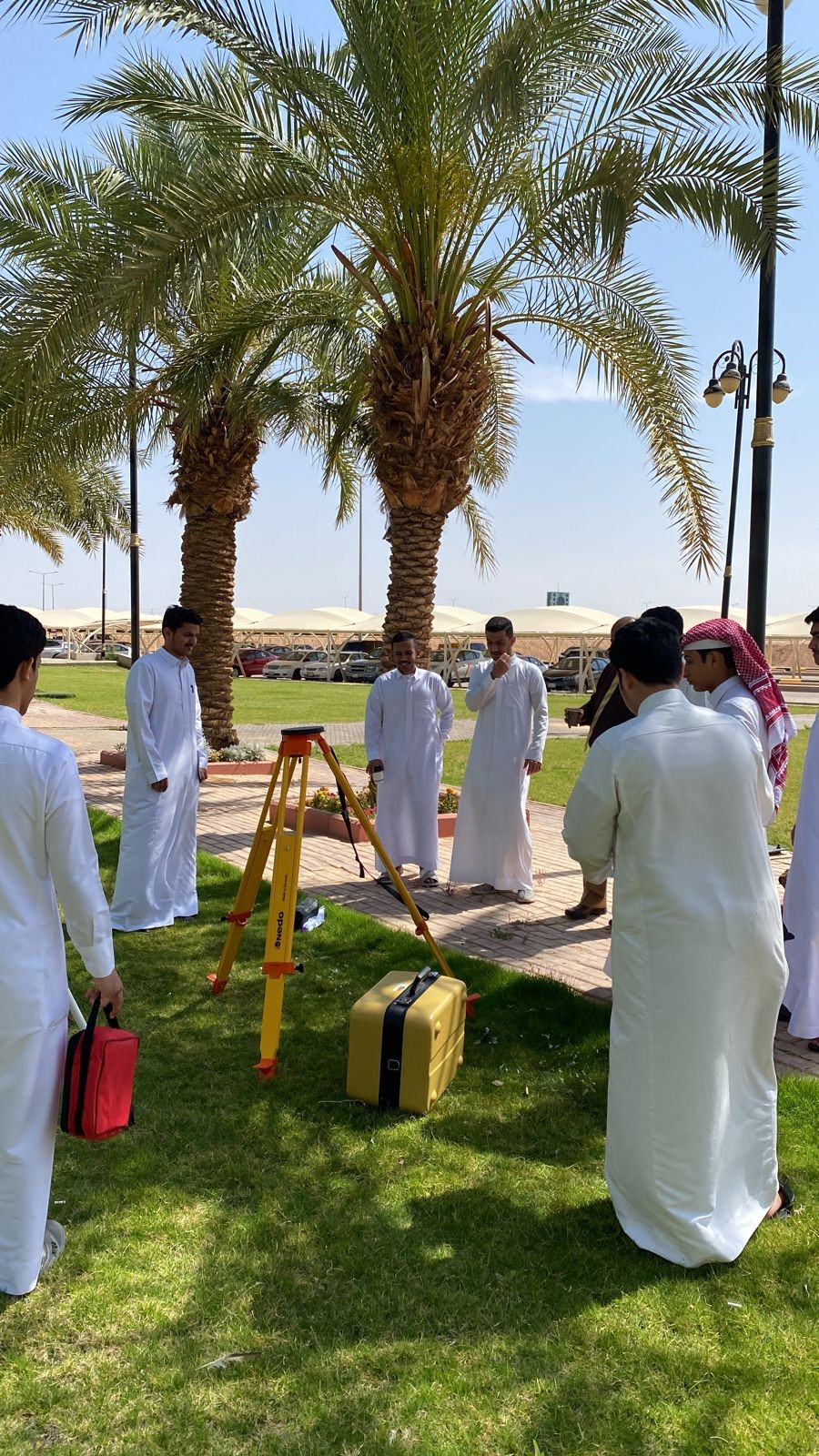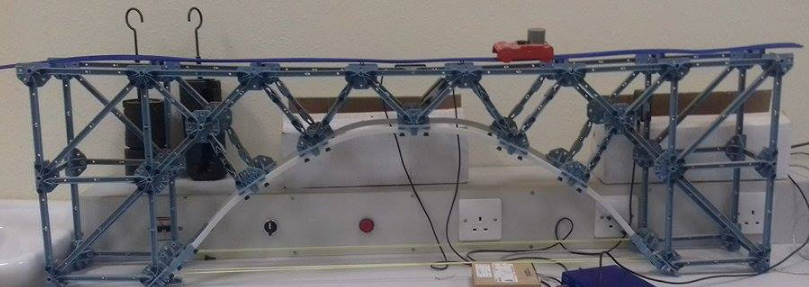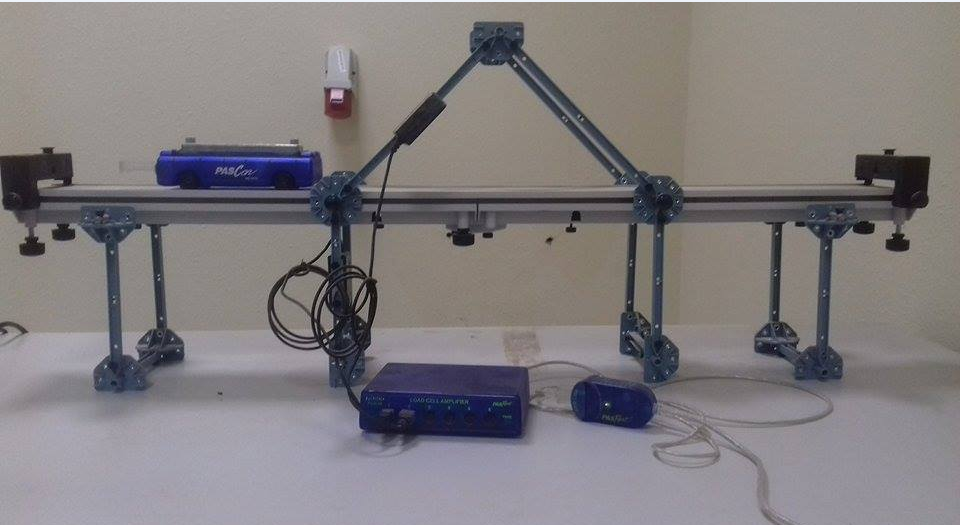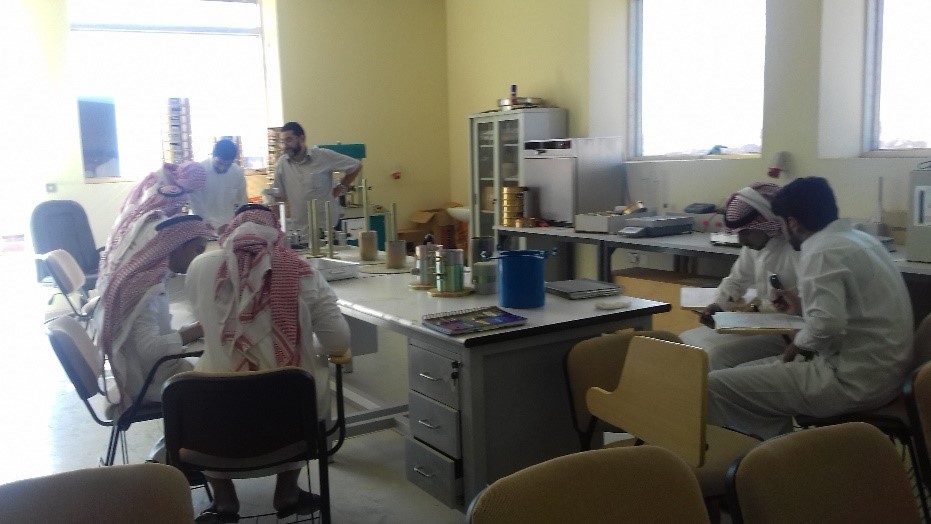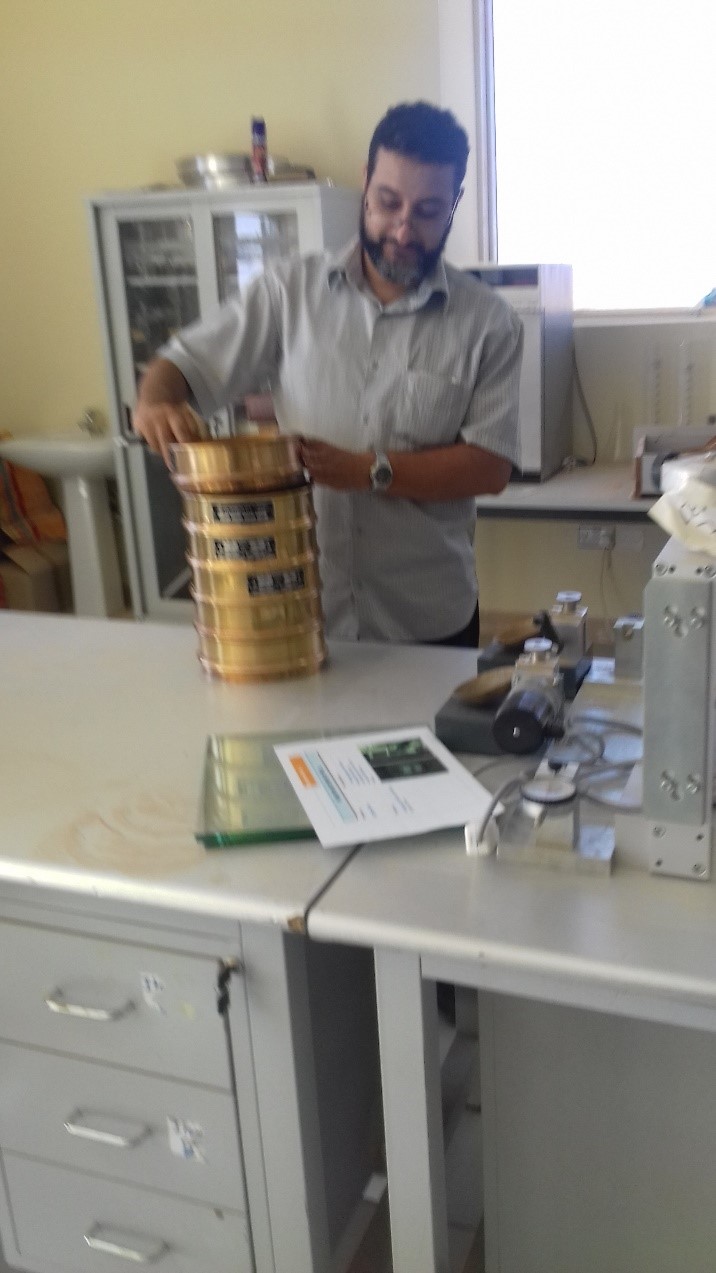Concrete Technology Lab
The concrete technology laboratory aims to determine the properties of construction materials. The laboratory supports teaching of the materials of construction course (1401340) and advanced construction materials course (1401443(. The Concrete Technology lab is equipped with many machines and apparatus that are listed below for performing tests on metals, cement, aggregate, fresh concrete, hardened concrete and wood. Through this laboratory, students become familiar with commonly used construction materials and their respective quality control according to the standards.
There are various lab tests performed on construction materials in the field of civil engineering to ensure their quality, durability, and safety. Here are some of the commonly performed tests:
Aggregates Testing:
- Sieve Analysis: Determines the particle size distribution for coarse and fine aggregates.
- Aggregate Crushing Value (ACV) Test: Measures the ability of an aggregate to resist crushing under a gradually applied compressive load.
- Aggregate Impact Value (AIV) Test: Measures the resistance of an aggregate to sudden shock or impact.
- Los Angeles Abrasion Test: Measures the abrasion resistance and durability of aggregates.
Concrete Testing:
- Slump Test: Measures the consistency of fresh concrete before it sets.
- Compressive Strength Test: Determines the strength of hardened concrete.
- Splitting Tensile Strength Test: Determines the tensile strength of concrete.
- Flexural Strength Test: Determines the flexural strength of concrete.
Cement Testing:
- Fineness Test: Measures the size of cement particles.
- Standard Consistency Test: Determines the quantity of water required to produce a cement paste of standard consistency.
- Setting Time Test: Measures the time for cement to start setting and completely harden.
- Compressive Strength Test: Determines the compressive strength of cement.
Steel Testing:
- Tensile Test: Measures the resistance of a material to a force tending to pull it apart.
- Bend Test: Determines the ductility or resistance to fracture under bending of steel.
- Rebend Test: Checks whether the steel can withstand the effect of bending and rebending.
- Chemical Analysis: Determines the percentage of different elements used in the steel.
These tests are performed according to the American Society for Testing and Materials (ASTM) standards.
Contents of Concrete Technology Laboratory
Instruments, Equipment’s & Tools | Items # |
Universal Testing Machine | 1 |
Compression Testing Machine | 2 |
Aggregate Sieves set | 3 |
Sieve Shaker | 4 |
Digital Concrete Test Hammer | 5 |
Concrete Test Hammer (NR) | 6 |
Ultrasonic pulse velocity Apparatus | 7 |
Digital Rebar Detection | 8 |
Automatic Recording Vicat Apparatus | 9 |
Vicat Apparatus | 10 |
Slump Cone | 11 |
Compacting Factor Apparatus | 12 |
Fresh Concrete Tester | 13 |
Air Meter | 14 |
Concrete Mixer | 15 |
Mortar Mixer | 16 |
Digital Balance 1000gm | 17 |
Digital Balance 10 Kg | 18 |
Digital Balance 60.0 kg | 19 |
Cubic Molds (150x150x150) mm | 20 |
Cylindrical molds (150 x 300) mm
| 21 |
Cylindrical molds (100 x 200) mm | 22 |
Cubic Molds (50x50x50) mm | 23 |
Digital Thermometer | 24 |
Curing Tank | 25 |
Drying Oven | 26 |
Vibration Table | 27 |
Protection Safety equipment | 28 |
Lifting Table trolley 150 Kg | 29 |
Digital Stop Watch | 30 |
Concrete Pocket Penetrometer | 31 |
Cordless Hammer Drill | 32 |
Digital platform 150.0 kg | 33 |
Caliper | 34 |
Measuring Lens | 35 |
Photo Gallery
Compression Testing Machine | Universal Testing Machine |
Vicat Apparatus | Sieves and Mechanical Sieve Shaker |
Compaction Factor Test Apparatus | Slump Cone |
Digital Concrete Test Hammer | Air Meter |
Concrete Mixer | Ultrasonic pulse velocity Apparatus |
| |
Surveying Lab.
The surveying Lab is a well- established laboratory that is equipped with almost all surveying Instruments needed for the students to apply the principles taught in the theoretical Surveying courses. The Surveying Lab is supporting courses of Civil Engineering program [Plane Surveying 1401270, Applications of Surveying and Mapping 1401271, B.Sc. Projects 1401491 and 1401492] of Engineering College. The Surveying Lab contains many different instruments, equipment and tools inside the laboratory as shown in Table [1-1]. In order to keep the surveying lab up to date, new important instruments were joined (March-2023) to the surveying lab [(1) of GNSS package (Topcon HIPER-VR) and (2) of Total Station (Topcon OS-201)]. The laboratory experiments include training students to measure (lengths), (horizontal and vertical angles), (make longitudinal), (areas), (transverse), (grid budgets to measure the elevations of different points) and (get points coordinates) by different instruments and techniques. Undergraduate students use this lab as an integral part of their surveying coursework and obtain topographic information that can help their capstone design projects, such as highway design and land development. Students also learn safety and instruction on the field work, the use and care of the surveying Instruments, Equipment and Tools.
Contents of surveying Lab.
Number | Instruments, Equipment and Tools | # |
|---|---|---|
1 | GNSS package (Topcon HIPER-VR), with accessories. [Date_15-3-2023] | 1 |
2 | Total station instruments (Topcon OS-201), Adjustable Leg Tripod and Reflectors. [Date_15-3-2023] | 2 |
2 | Total station instruments (Leica), Adjustable Leg Tripod and Reflectors. | 3 |
4 | Digital theodolite instruments and Adjustable Leg Tripod. | 4 |
5 | Automatic level instruments and Adjustable Leg Tripods. | 5 |
2 | Laser level instruments. | 6 |
2 | Digital level instruments. | 7 |
20 | Aluminum staff. | 8 |
15 | Digital planimeter. | 9 |
2 | Surveying compass | 10 |
5 | Brunton compass | 11 |
25 | Ranging rods | 12 |
4 | Square optical prism | 13 |
3 | Steel measuring tape (50 m) | 14 |
3 | Fiberglass tape (50 m) | 15 |
5 | Steel measuring tape (30 m) | 16 |
4 | Fiberglass tape (30 m) | 17 |
3 | Steel measuring tape (5 m) | 18 |
3 | Digital distance measuring | 19 |
49 | Arrows | 20 |
3 | Wooden mallet | 21 |
46 | Survey pegs (Consumer) | 22 |
2 | Spirit level (big) architect | 23 |
10 | Ground plate for staff | 24 |
100 | Bolts (Consumer) | 25 |
4 | Color Spray (Consumer) | 26 |
3 | Spirit level (small) architect | 27 |
|
|
Photo Gallery
Different Instruments, Equipment and Tools of surveying Lab | |
GNSS package (Topcon HIPER-VR) | Topcon )HIPER-VR) instrument |
Total station (Topcon OS-201) instrument | Digital Theodolite instrument |
Automatic level and Total station (Leica) instruments
| Digital planimeter, Safety Jacket and Arrows
|
Different Tapes, staff, Ranging rods, safety and instruction notes | |
Structures Lab
The Structures Lab in the Civil Engineering Department is a facility equipped to provide students with practical, hands-on knowledge and experience in the field of structural analysis. It supports the learning of two courses 1401202 Structural Analysis 1 and 14012303 Structural Analysis 2, offering a combination of theoretical and practical learning. The lab aims to develop crucial skills such as problem-solving, hands-on experience, and written communication through detailed reports on experimental results.
Courses supported
- Structural Analysis (1401202): This course introduces students to the fundamental concepts of structural analysis, including force equilibrium, stability, and determinacy. Students learn to analyze statically determinate structures, such as beams, trusses, and frames, under various loading conditions.
- Structural Analysis 2 (1401303): Building on the foundation of Structural Analysis 1, this course covers advanced topics such as the analysis of statically indeterminate structures, influence lines, and the application of energy methods. Students are exposed to various techniques to solve complex structural problems, including the force method, displacement method, and matrix methods.
Skills Developed
- Problem-solving: Students learn to tackle complex structural problems and apply appropriate analysis techniques to find solutions.
- Practical hands-on experience: The lab allows students to work with real-life structural models and test their understanding of theoretical concepts.
- Written communication: Students are required to document their findings and observations in detailed lab reports, developing their ability to communicate complex ideas effectively.
Equipment
The Structures Lab is equipped with the following tools and equipment to provide students with a comprehensive learning experience:
- Basic and advanced truss sets from Pasco, Inc.: These truss sets allow students to perform force calculation experiments in both static and moving loads, facilitating a better understanding of the behavior of trusses under different loading conditions.
- Deflection frame: This apparatus is used to measure the deflection of various materials, such as plastic and steel beams, as well as trusses. By studying the deformation of these materials, students gain insights into their performance under loads and the factors that influence their behavior.
Overall, the Structures Lab in the Civil Engineering Department provides a robust learning environment for students to deepen their understanding of structural analysis and develop essential skills for their future careers in the field.
1. Experiments
Week No. | Experiment |
|---|---|
| 7 | Experiment No. 1: Indeterminate Bridge Truss |
| 8 | Experiment No. 2: Crane Beam |
| 10 | Experiment No. 3: Vertical Truss |
| 11 | Experiment No. 4: Steel Beam with plastic diagonals |
| 12 | Experiment No. 5: Advanced Structures Set |
| 13 | Experiment No. 6: Large Structures Set |
List of Experiments and Exercises carried out by the Lab
HAMPDEN MODEL H-6320 (Structures Test System)
| The used instruments, equipment, and tools | Experiments (Exercises) carried out by the laboratory | No |
|---|---|---|
- H-6320 Base - Hydraulic pump - Ram - Dial Indicator Set - H-6320 Indeterminate bridge truss | Indeterminate Bridge Truss | 1 |
- H-6320 Base - Hydraulic pump - Ram - Dial Indicator Set - H-6320 Crane beam with mounting hardware | Crane Beam | 2 |
- H-6320 Base - Hydraulic pump - Ram - Dial Indicator Set - Vertical truss | Vertical Truss | 3 |
- H-6320 Base - Hydraulic pump - Ram - Dial Indicator Set - Steel beam (with photo plastic diagonals) | Steel Beam with Plastic Diagonals | 4 |
PASCO Structures System
| The useI instruments, equipment, and tools | Experiments (Exercises) carried out by the laboratory |
|---|---|
- Flexible I-Beam - Connector - Axle - Pulley - Spacer - Collet - O Ring - Screw - Cord Tensioning Clip - Yellow Cord - Load Cell and Amplifier Set - PC Computer and Interface - Truss Set - Bridge Set | Advanced Structures Set (ME-6992) |
- large structures parts - structures Rod clamps - flexible I-beams - Full Round Connector - force plate form structures - Truss set members - Truss set screws - Road Bed Clip - Cord Lock - Mini-car Starter Bracket - Mini Car - Photogate Flag - Mini-car Mass - Road Bed Coupler - Cord Tensioning Clip - Yellow Cord - Load Cell and Amplifier Set - PC Computer and Interface - Truss set | Large structures set (ME-7003) |
Indeterminate Bridge Truss Experiment
Advanced Structure Set of Suspension Bridge
Arch Truss Set
Large Structure Set
Bridge Truss
Geotechnical Engineering Lab.
The laboratory of Geotechnical engineering is one of the main civil engineering laboratories, which contains a series of devices. These devices have been attributed for one or more chapters in the Geotechnical Engineering course as part of a typical undergraduate curriculum.
The main objectives of laboratory course’s part are to introduce geotechnical problems from practical point of view, familiarize the students to common geotechnical test methods and terminology.
Naturally these laboratory resources are intended to use by undergraduate, alumina and researchers.
The Geotechnical laboratory resources are used for the following tests to perform according ASTM Standards:
- The mechanical sieve analysis and the hydrometer
- The equivalent sand test
- The relative density test
- The Atterberg limits (Liquid Limit and Plastic Limit)
- The laboratory automatic Proctor compaction
- The constant head permeability test
- The direct shear test
- The triaxial test
The mentioned tests are performed by students and the work is organized as a teamwork, having exchanges of difficulties and solutions. Laboratory Manual is written, and the steps are described in accordance with the applicable American Society for Testing and Materials (ASTM) and each experience is associated to ASTM standard number.
List of instruments & tools inside the laboratory
Instruments, equipment & Tools | Items |
|---|---|
WATER CONTENT TEST: Disturbed sample of moist soil; Balance capable of measuring to the nearest 0.01 gr; soil drying oven set at 110o ± 5oC; Oven-safe containers; Spatula; and Permanent marker for labeling containers. | 1 |
GRAIN SIZE DISTRIBUTION TEST: Balance, Set of sieves, Cleaning brush, Sieve shaker, Mixer (blender), 152H Hydrometer, Sedimentation cylinder, Control cylinder, Thermometer, Beaker, Timing device. | 2 |
ATTERBERG LIMITS TEST: Liquid limit device, Porcelain (evaporating) dish, Flat grooving tool with gage, Eight moisture cans, Balance, Glass plate, Spatula, Wash bottle filled with distilled water, Drying oven set at 105°C. | 3 |
LABORATORY COMPACTION TEST: Molds, Compaction apparatus, Extruder, Balance, drying oven, mixing pan, Trowel, #4 sieve, Moisture cans, Graduated cylinder, Straight Edge. | 4 |
HYDRAULIC CONDUCTIVITY: Coarse-grained soil; fixed-wall permeameter; Constant-elevation water reservoir; Tap water source; manometer; measuring tape or yardstick; Large vessel for collecting effluent; Scale capable of measuring to the nearest 1.0 gr; Timing device capable of measuring to the nearest second; and Vacuum source capable of achieving a vacuum of 500 mm Hg. | 5 |
DIRECT SHEAR TEST: Coarse-grained soil; fixed-wall permeameter; Constant-elevation | 6 |
The used instruments, equipment and tools | Experiments (Exercises) carried out by the laboratory | No |
|---|---|---|
| GRAIN SIZE DISTRIBUTION (GSD) TEST
| 1 |
| ATTERBERG LIMITS TEST:
| 2 |
| LABORATORY COMPACTION TEST:
| 3 |
| HYDRAULIC CONDUCTIVITY: | 4 |
Courses and Applied Experiments
Applied Experiments and Exercises | Course Code & Name | Items |
|---|---|---|
1- GRAIN SIZE DISTRIBUTION (GSD) TEST 2- ATTERBERG LIMITS TEST 3- LABORATORY COMPACTION TEST 4- HYDRAULIC CONDUCTIVITY | 1401-330 Geotechnical Engineering | 1 |
| 1401-432 Advanced Soil Mechanics | 2 |
B. Sc. Projects in Geotechnical Engineering Lab.:
- Design of foundations of the Engineering Faculty in the Northern Border University.
- Storm water drainage design.
- Design of foundations of engineering and a retaining wall for an underground car parking: case of four floors-building in Arar.
Sieve Analysis



